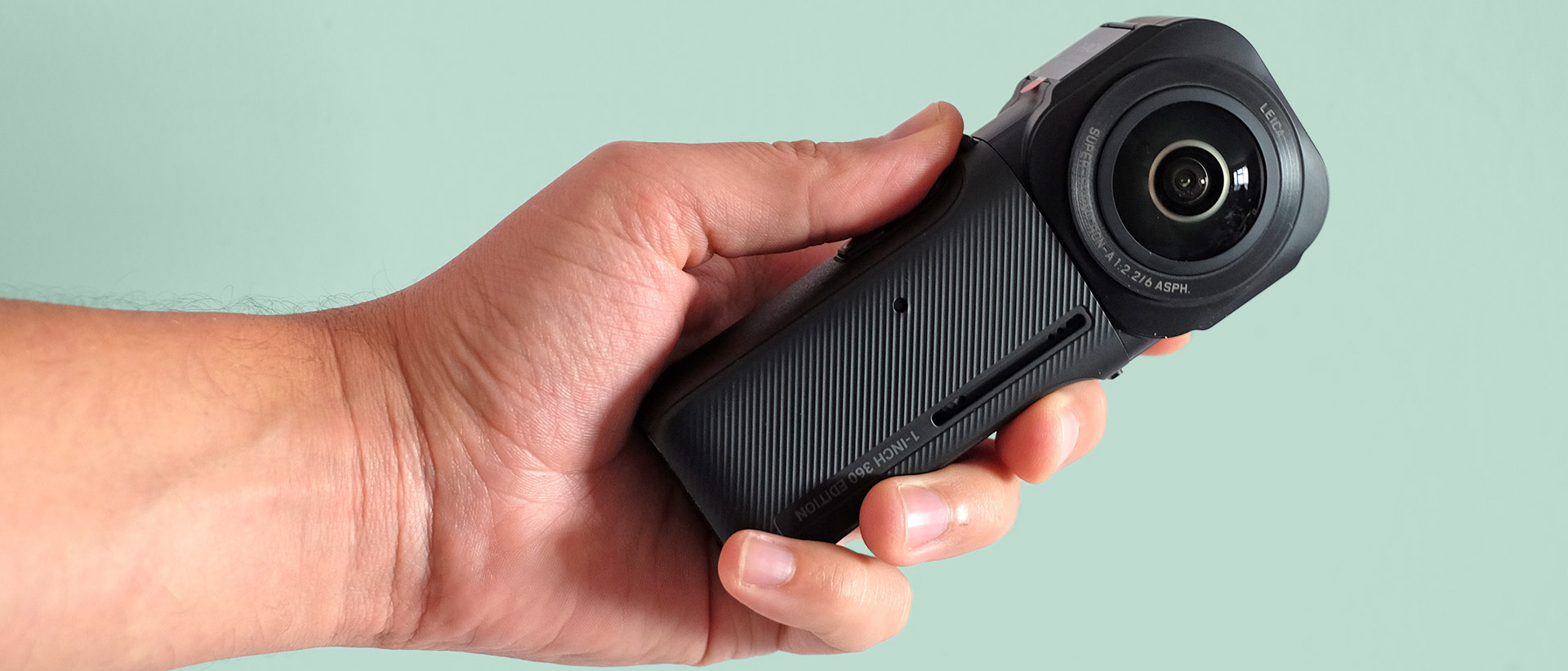TechRadar Verdict
If you're looking for the absolute best image quality from a 360 camera, then the One RS 1-Inch edition certainly delivers. Its dynamic range particularly impresses and we're big fans of Insta360's apps for smartphones and desktop computers, which makes it fun to use. But it also doesn't bring a sea change in image quality in all areas, so you'll have to weigh up whether that high price tag is justified for the kind of videos you shoot.
Pros
- +
Improved highlight retention over rivals
- +
Fun, dynamic and easy editing tools
- +
Excellent stabilization
- +
Compatible with existing One RS components
Cons
- -
No huge improvement in low-light shooting
- -
Limited IPX3 water resistance
- -
Unsuitable for extreme sports use
- -
Pricey for a 360 camera
Why you can trust TechRadar
Two-minute review
The Insta360 One RS 1-Inch 360 Edition is a modular 360-degree action camera with unusually large image sensors. On each side of its lens module are two 1-inch sensors, which are much bigger than the ones we've seen in previous cameras like the Insta360 One X2.
This downsides of this approach are that the One RS 1-Inch 360 Edition is bigger and pricier than our current pick of the best 360 cameras, and lacks the ruggedness of some of the best action cameras. But does the image quality justify these drawbacks? If you're looking for the highest-possible quality from a consumer 360 camera, then the answer is most likely yes.
The main benefits of its larger sensors is higher dynamic range, which means better highlight retention, and superior low-light performance. The former is the most significant, as this still isn't a video camera that's particularly comfortable shooting at night. Once you crop into night-time scenes, the clarity gains over alternatives like the GoPro Max (and its 1/2.3in sensor) are marginal.
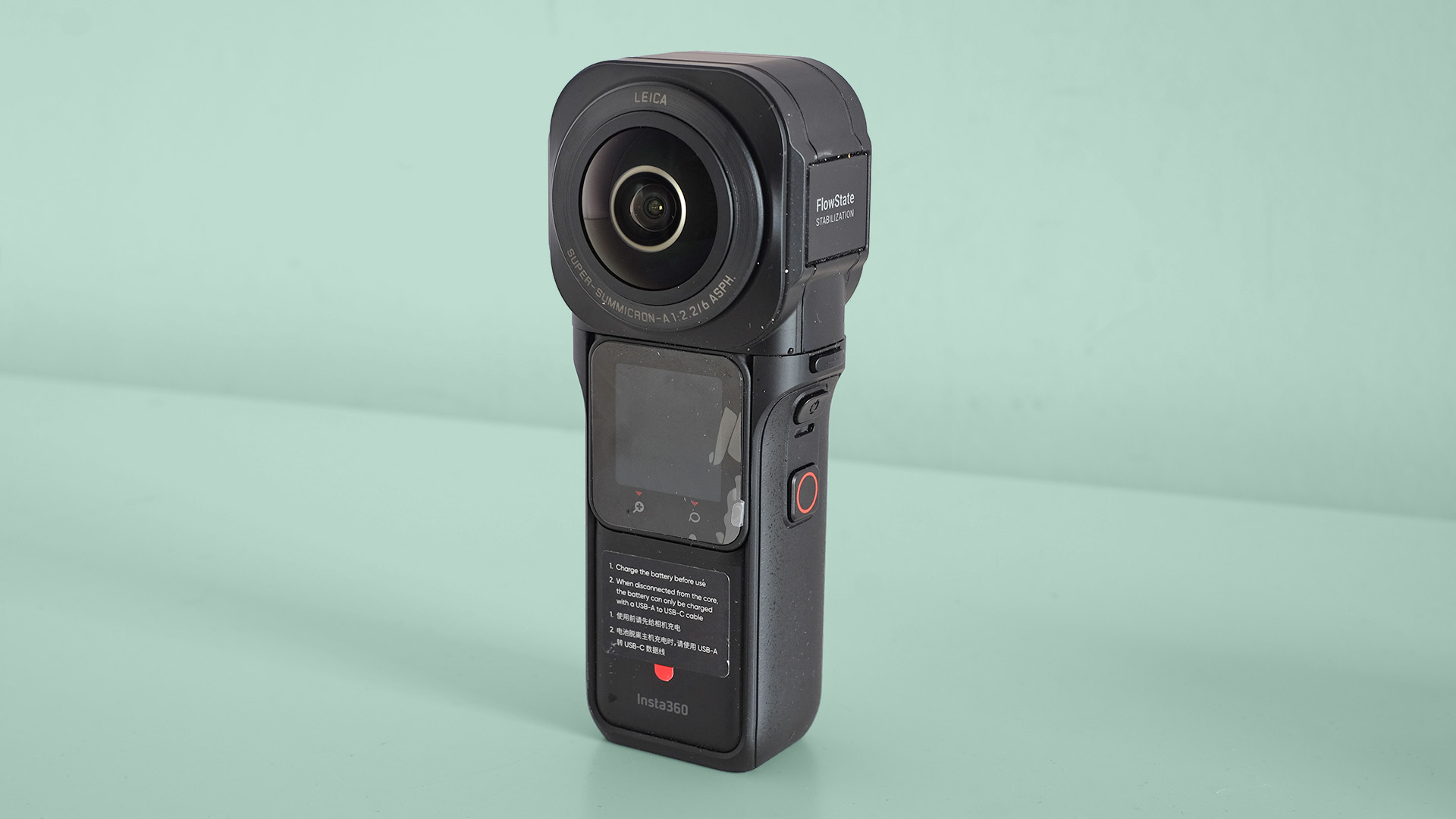
Still, despite its painfully long name, the One RS 1-Inch 360 Edition is a great example of what's now possible with 360 cameras. If you're not already familiar with them, 360 cameras let you capture the entire scene around you, then decide where to point the camera in a traditional 'flat' video afterwards.
And one of the main benefits of Insta360's cameras is that its apps – for both desktop and mobile – are impressively intuitive and powerful. Thanks to features like object-tracking and automatic transitions between frames, the software is a real blast – and makes the crucial editing phase relatively simple even for those new to 360 cameras.
The downsides? Your audio options are still relatively limited and we think the One RS 1-Inch 360 Edition is far too expensive for many people to even consider. The ambitious design also has some significant compromises, including the fact that it's less rugged than standard action cameras (only offering, for example, IPX3-level water resistance).
Still, it does show that Insta360's modular tech isn't destined to become vaporware (like Motorola's Moto Mods or Google's Project Ara) and it is an impressive and fun-to-use camera. At least when you are not worrying about scratching its giant lenses.
Sign up for breaking news, reviews, opinion, top tech deals, and more.
Insta360 One RS 1-Inch 360 Edition release date and price
The Insta360 ONE RS 1-Inch 360 Edition costs $800 / £810 / AU$1,299 all-in. This gets you all the bits and pieces you’ll see in this review, including the Core body, camera attachment, battery case, lens cap and mounting bracket.
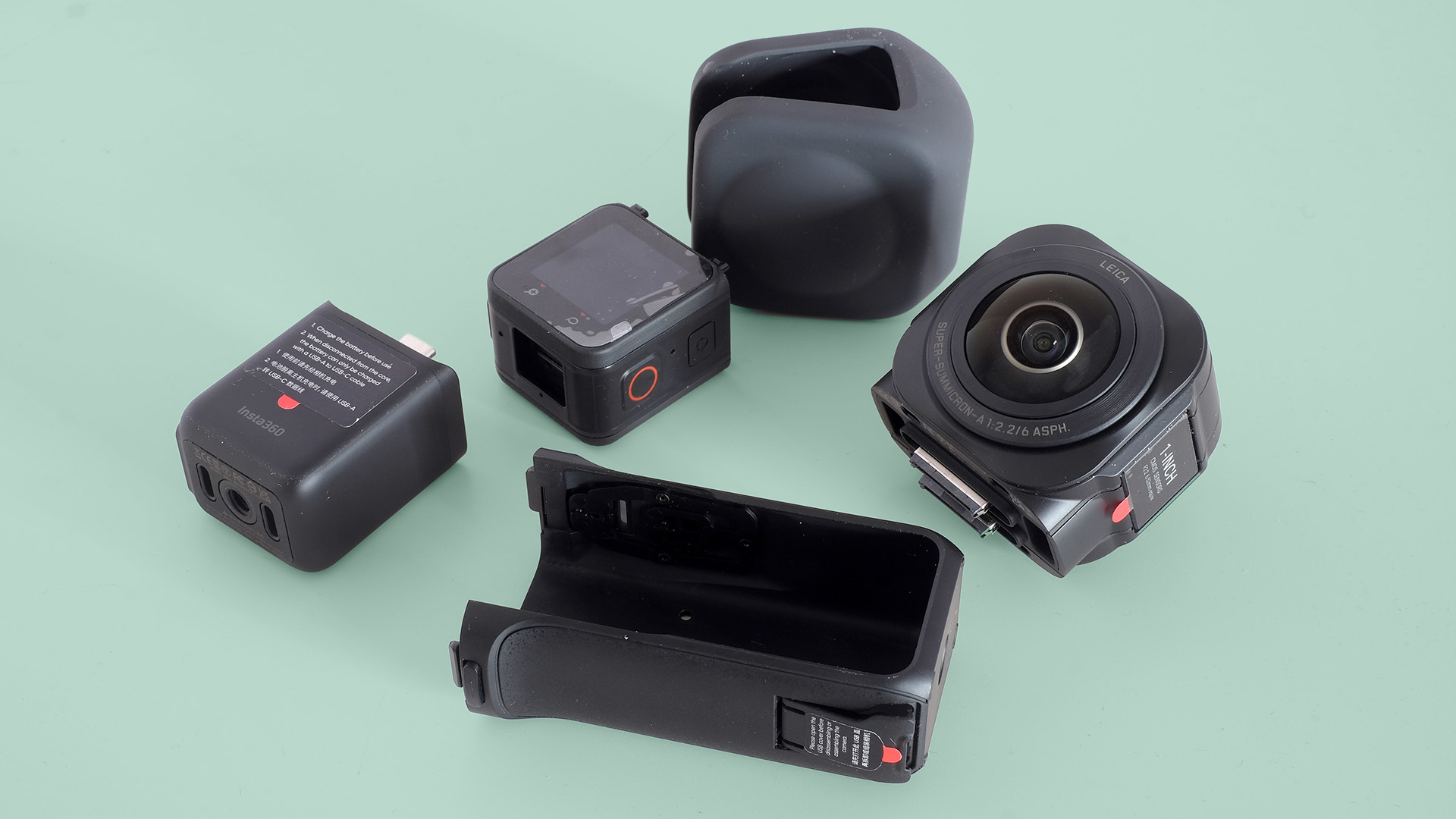
Those who already own an Insta360 One RS can buy a package without the display module, saving $150 / £150 in the process. You can’t use the previous cameras’ batteries as the Insta360 ONE RS 1-Inch 360 unit has a bespoke design that fits the grip handle.
It was released at the end of June 2022, a little under two years after the Insta360 One X2, a comparable but cheaper 360-degree camera from the same company.
Design
- Slightly bulky, stick-like design
- Part of the One RS modular system
- Relatively limited IPX3 water resistance
The Insta360 One RS 1-Inch 360 Edition comes in four bits, mirroring what you see in other Insta360 modular cameras. Its lens module is the showstopper. This plugs into the 'brainbox', which holds the screen and memory card. The battery sits at the bottom, and a slim shell sits around the lot, holding the blocks in place.
The stick-like arrangement of the Insta360 One RS 1-Inch 360 Edition’s modules makes the camera itself a grip. Just holding it solo places your hand far enough away from the lenses to produce usable footage, you just make to make sure to avoid rustling around the microphones, which sit in the middle brick.
You also get a rubbery lens cap, which you’ll want to pop on whenever the Insta360 One RS 1-Inch 360 is not in use. This camera has pretty massive lenses, and they feel more vulnerable than those of either the GoPro Max or the Insta360 One X2.
For a camera with a price that puts it out of the reach of many, it feel very friendly in use. However, its mounting suitability is not on-par with a classic GoPro.
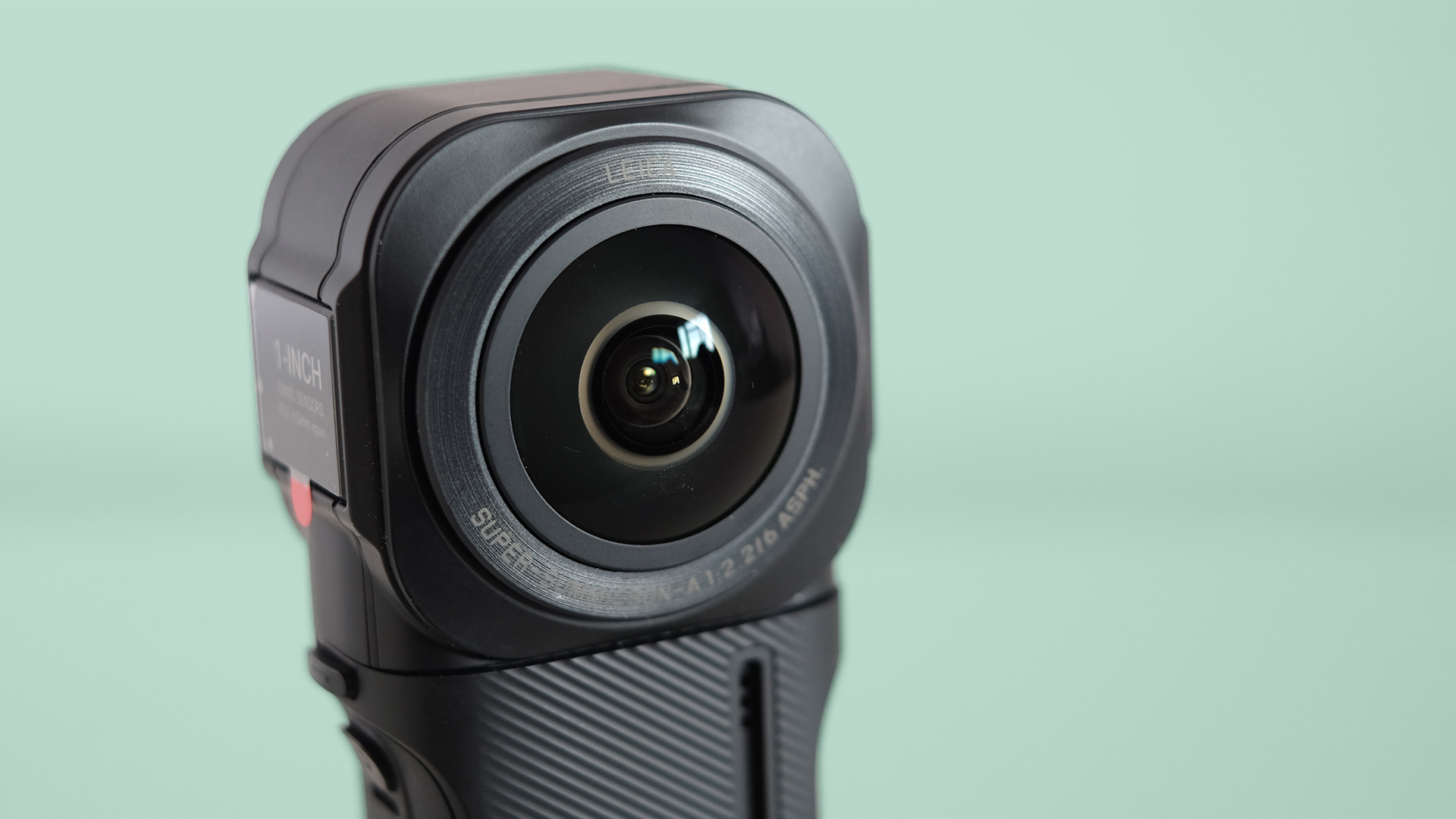
The Insta360 One RS 1-Inch 360 Edition also only has IPX3 water resistance, meaning it can handle water sprays at up to 60 degrees off vertical. Rain is the limit, with 'light rain and snow' being the official line, and Insta360 has not yet announced an underwater/diving case for the camera.
After a couple of minutes of shooting you’ll feel the camera start to get warm. This is normal, of course, but in this case the effect is exacerbated by your hands sitting over the main processor block and the battery.
We’d also feel much less confident mounting the Insta360 One RS 1-Inch 360 to a helmet or handlebar than, for example, a GoPro Max. It weighs 239g according to our scales. This is only about 20% heavier than a perfectly ordinary phone, but it feels hefty.
Insta360 clearly intends you to get creative with mounts, though, because there’s a 1/4-inch threaded port on the bottom. It screws right into selfie sticks and tripods — no extra accessories required.
Interface
- The same interface style as previous Insta360 cameras
- Small screen can feel a bit fiddly
- But 360-degree shooting makes framing a non-issue
From the front and sides there’s very little sign that the Insta360 One RS 1-Inch 360 Edition is modular. The outer shell has its own buttons that push in the controls on the main module, and they feel great. Power and shutter buttons sit near where your thumb naturally rests. It works best for right-handed folks, though, and the outer casing is not reversible.
From the back, the Insta360 One RS 1-Inch 360 Edition will become much more familiar to those who have used an Insta360 camera before. The outline of the classic display module is visible, and that brings the compromise we’ve mentioned in every Insta360 modular camera review.
The preview image is far smaller than that of either a GoPro Hero 10 Black or GoPro Max, and the display itself is fairly low-res. However, this seems much less of an issue with the Insta360 One RS 1-Inch 360 than Insta360’s non-360-degree cameras.
Here you compose the shot after capture, so the main consideration is where to point the lenses to avoid the focal point sitting anywhere near the 'seam' of the two cameras’ fields of view.
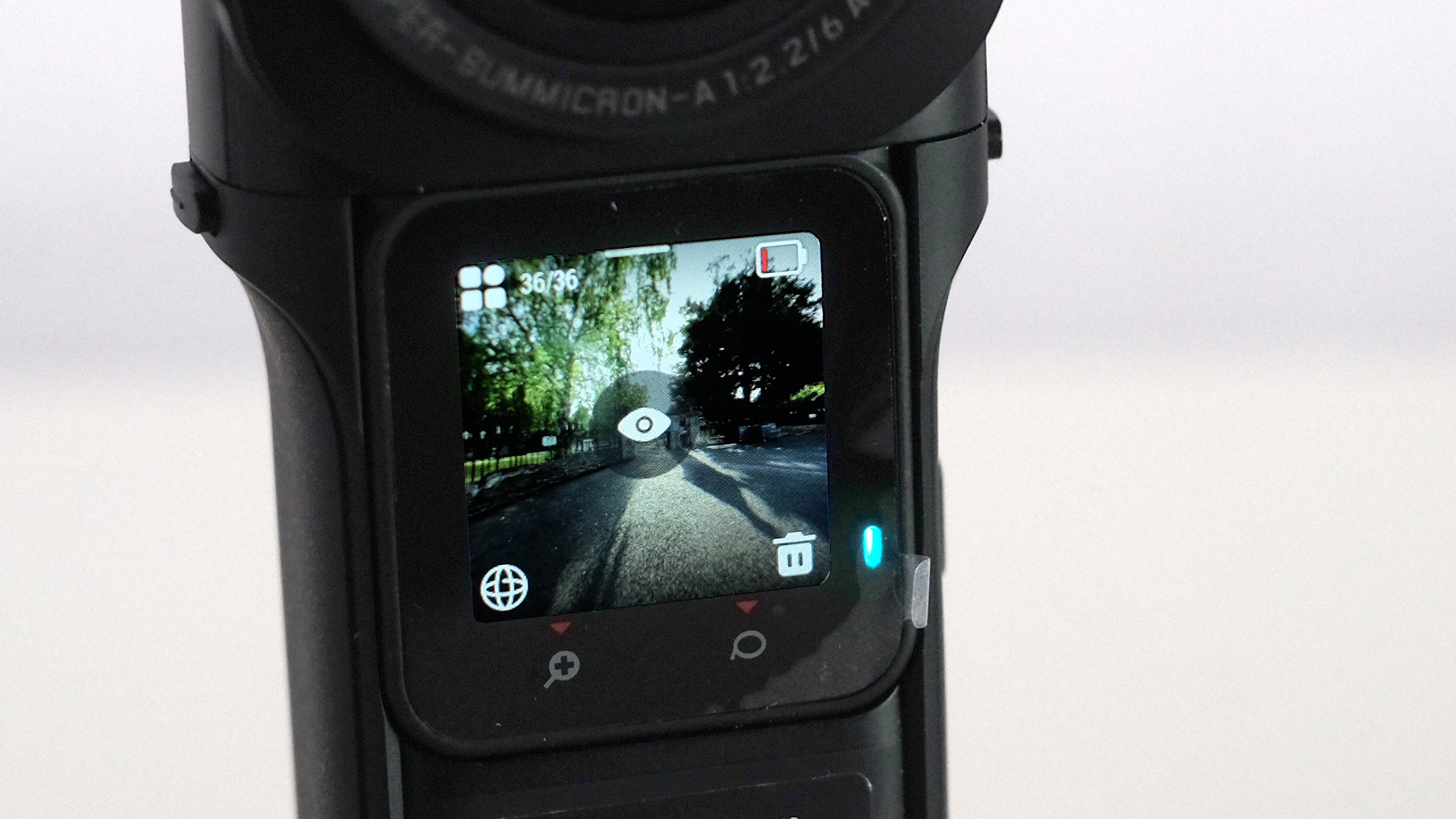
Insta360’s interface is starting to show its age, though. It is not dissimilar to the software of low-cost action cameras from brands most have never encountered, and lacks the swishy inertia-tinged animations GoPro uses.
A year or so ago, the Insta360 style would sometimes seem refreshingly minimal and practical next to the rather slow and laggy GoPro style. But GoPro’s responsiveness improved significantly with the GoPro Hero 10 Black thanks to its new GP2 processor.
Still, Insta360 expects you to do much less with the interface here as you shoot. You mostly just flick left and right on-screen to select the mode you want – video, stills, time-lapse and so on. It is a largely wide but shallow layout, which suits the small and fiddly touchscreen, where GoPro makes greater use of sub-menus.
Performance and image quality
- Stabilization is excellent, as expected
- Better dynamic range than most 360 rivals
- Low-light image quality is only notable in the tripod StarLapse mode
You can be almost thoughtless when shooting with the Insta360 One RS 1-Inch 360 Edition. How your footage looks is largely determined in the edit and Insta360’s FlowState stabilization is almost flawless.
It has horizon-leveling, and as the image captured is a full sphere, there’s endless scope for moving the frame seen by the viewer to counter motion. There are some limitations – walk or run around with the Insta360 One RS 1-Inch 360 in your hand and it won’t look as if it’s attached to a camera track monorail, because there will be a bit of up-down motion even stabilization can’t mitigate. But we definitely have no complaints about the smoothness of footage.
The main question on image quality is what do those larger one-inch sensors actually get you? It isn't extra resolution or frame-rates.
5.7K resolution at 30fps is the Insta360 One RS 1-Inch 360 Edition’s top capture mode, matching the GoPro Max and Insta360 One X2. There’s no 60fps mode even as you work your way down the resolutions either. 50fps is the max at 3K and there’s no lower resolution because this wouldn't give you enough information for crops into the 360-degree footage. Zoom in far enough and the picture will look very soft. It’s a larger sensor, not a magic sensor.
There’s no slo-mo and – the part we’d like – no traditional 'flat' shooting mode. We don’t mean a Log style dynamic range-preserving shooting style, but a non-360 field of view that lets you generate ready-to-use files. Everything needs to be edited down from a 360-degree capture, and it makes the Insta360 One RS 1-Inch 360 less approachable than the GoPro Max. That GoPro can be used like a normal non-360 action camera when that’s what you need.
Similarly, while there are neat TimeShift and TimeLapse modes, they can only be accessed through the Insta360 app. You can’t watch previews on the Insta360 One RS 1-Inch 360’s screen or easily pull them off the microSD card. As is always the case, the GoPro experience is smoother than Insta360’s in some areas.
But back to our original question: where are those 1-inch sensor benefits? We think the primary one is highlight retention, made possible through higher native dynamic range.
This effect is seen most commonly in blown-out clouds. If you shoot an open blue sky shot with a few clouds, it’s not that much of an issue with the average action camera. But as soon as there’s enough partial foliage cover to make the camera bump up the exposure, action cameras tend to turn bright clouds into featureless white blobs. The Insta360 One RS 1-Inch 360 does this to a much lesser extent than our GoPro Max benchmark.
Blown out clouds are still a thing here, but more contour detail is retained in those bright spots.
A large sensor can also help at night but we were not that impressed by the Insta360 One RS 1-Inch 360 Edition’s night shooting. The picture may look okay zoomed all the way out, but perform significant cropping to get a flat final video and everything looks pretty mushy at night. Clarity gains over the 1/2.3-inch sensor GoPro Max are marginal.
To get a decent image in true low light you have to use the StarLapse mode. This combines long exposure stills, so is only suitable for tripod use and certain scenes. Look at Insta360’s website and all the claims about amazing low-light appear to refer to this mode.
We did, however, see significant benefits over the GoPro Max when walking around indoors – not in darkness, but in pretty dim lighting. The Insta360 One RS 1-Inch 360’s picture was significantly cleaner than GoPro’s, with less dancing image noise over flat walls as you move around rooms.
The Insta360 One RS 1-Inch 360 Edition also has the classic Insta360 approach to detail. It tries to preserve, or at least represent, fine detail much more than the GoPro Max does even at its 'high sharpness' setting.
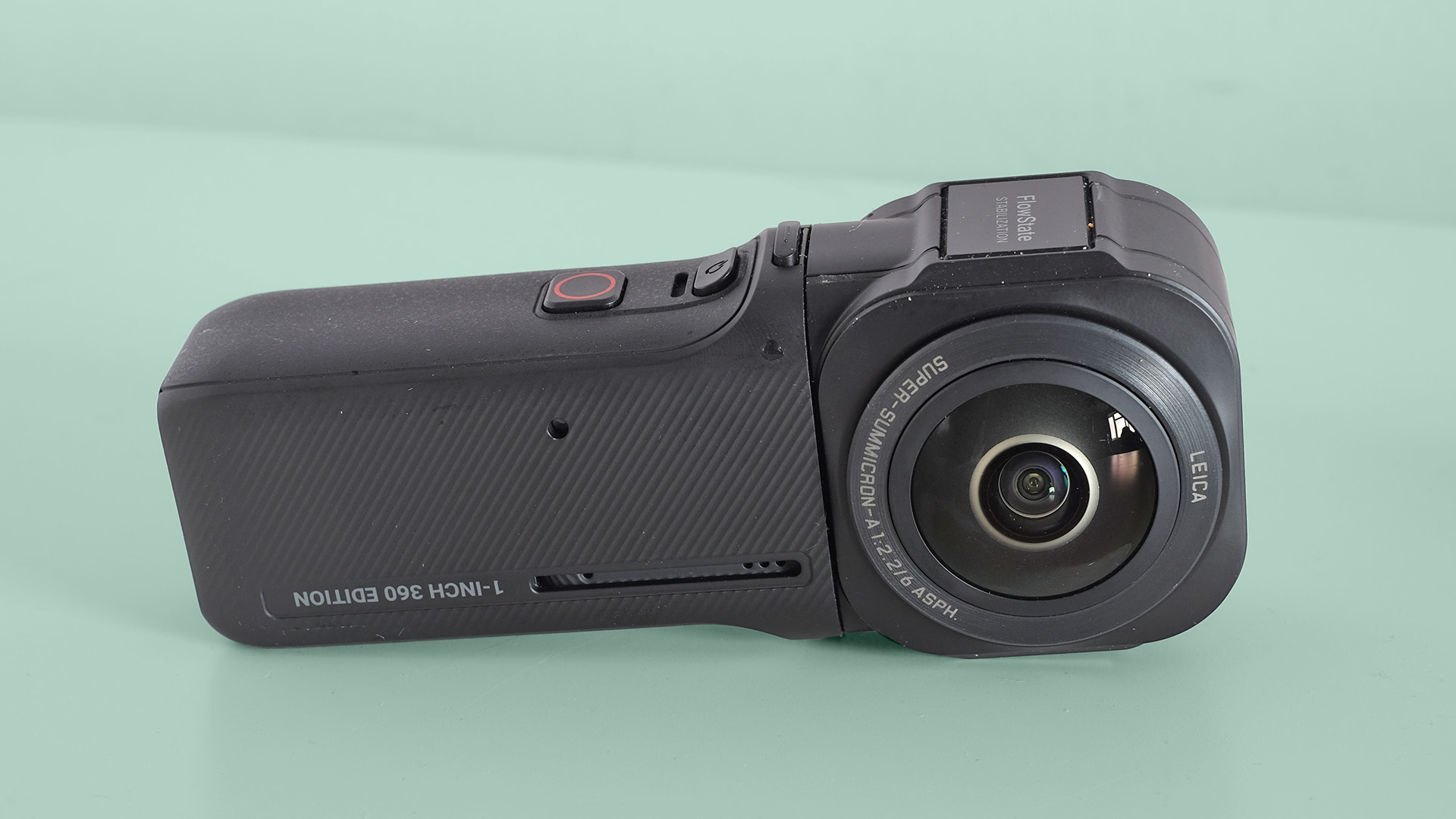
There are benefits and tradeoffs here. Edit a 6K-resolution 360-view capture down to a flat one in both cameras and the Insta360 clip will look more vital, with an almost 4K-like presentation – despite only outputting edited flat videos at 1080p.
However, this very approach also leads to shimmering detail in textures as you move. Grass, brickwork, sidewalks and gravel paths are all affected pretty badly at times. There’s virtually none of this with the GoPro Max, because its entire approach is different – it aims for a slightly softer but more consistent image.
In other areas, the Insta360 One RS 1-Inch 360 Edition is simply technically superior than its GoPro rival. For example, the Insta360 One RS 1-Inch 360 lens suffers from noticeably less chromatic aberration than the GoPro Max towards the join point of the two cameras, and is remarkably sharp right up to the camera borders.
Most good 360-degree cameras are solid in this respect, but it means there’s less evidence of the seams when you do dramatic pans.
What’s the takeaway? We think the most useful upgrade of the larger sensors is in helping to preserve highlights during daylight use. Unfortunately, action cameras are being thoroughly outpaced on the low light side by phones thanks to their more advanced software and processing, although the Insta360 One RS 1-Inch 360 will no doubt capture some decent night-time city scenes as long as you edit with a fairly wide field of view.
Editing
- Insta360’s phone app is powerful and easy to use
- Insta360 Studio is also available for desktop use
The Insta360 editing process is a blast. You can do it using a desktop app called Insta360 Studio, or the standard phone app.
We used the phone app – it puts powerful tools at your fingertips, but manages to make them intuitive to use. This relies on keyframes. As you flick through the video timeline you can pinch to zoom and move the field of view to tell the software where you want the camera view to be at any specific point. Transitions are calculated automatically, and if you want to massage them into a faster or lower transition you can do so by simply adding more keyframes.
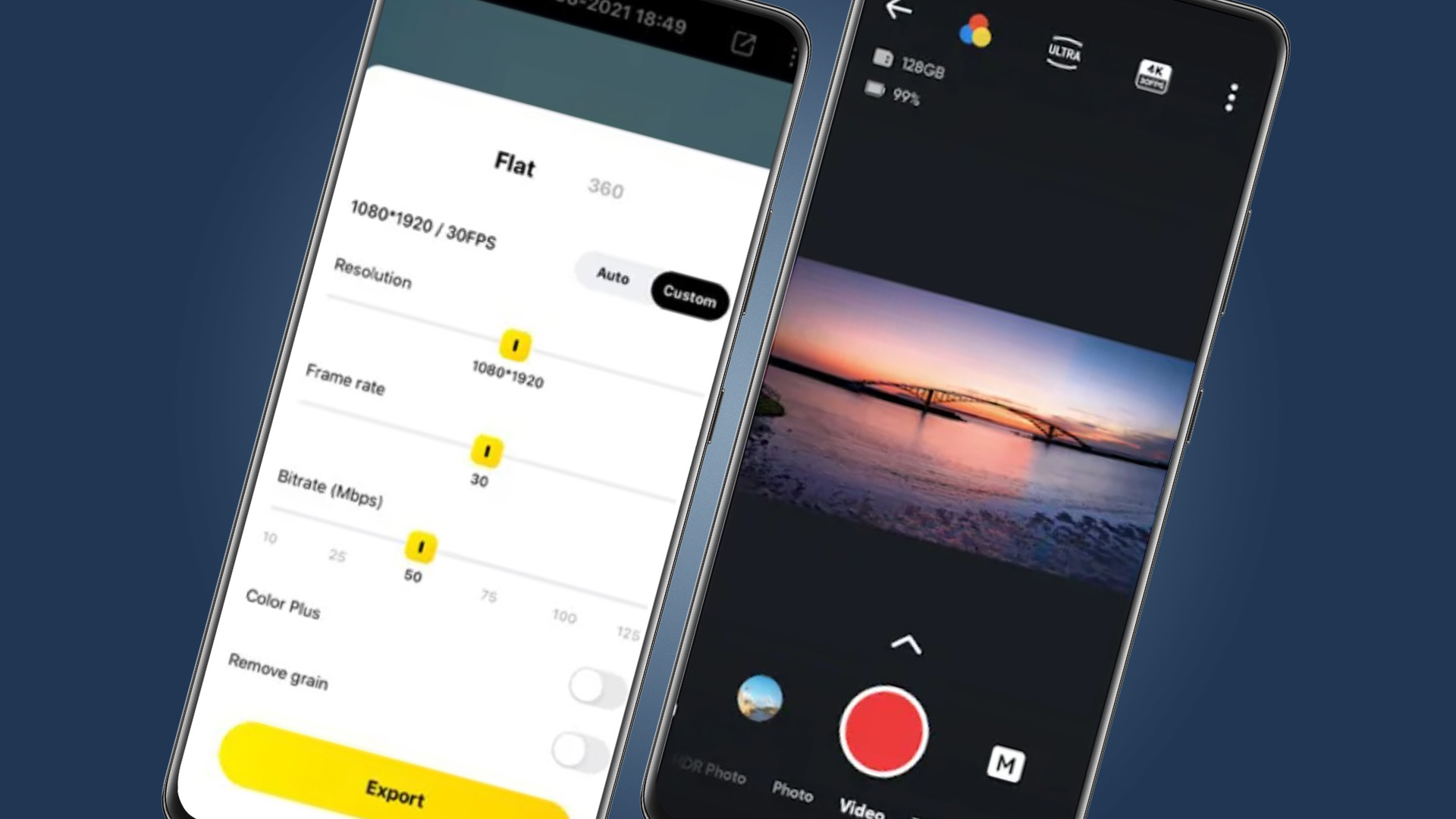
You can also use object tracking. It’s one of the options you’ll see whenever you establish a new keyframe. Draw a box around the object you want the Insta360 ONE RS 1-Inch 360 Edition to follow and the algorithm does the rest. You simply tell the app when you want the tracking to stop. It works remarkably well.
MultiView is another option. This is a picture-in-picture mode for vlog-style videos. It uses face recognition to display a cropped section of, most likely, the person shooting the video. This should prove a hit for content creators who want for a multi-cam look while using a single camera.
It could do with an elegant transition, rather than just popping in and out, but if you want MultiView you’ll probably want it for the whole clip. Insta360 also offers a desktop app, called Insta360 Studio, which is free to use.
Battery life
- Lasts for around an hour, as advertised
- We experienced USB connectivity issues
- No improvement to sound – use the mic adapter if audio is critical
Insta360 says the Insta360 One RS 1-Inch 360 Edition battery lasts up to 62 minutes when shooting in the top 6K/30 mode. Does it?
A 20-minute video took 29% off the battery, which suggests it will last up to 68 minutes. Considering battery reporting is rarely entirely exact and capture may stop before the battery is entirely dead, Insta360’s estimates seem accurate.
The Insta360 One RS 1-Inch 360 Edition can shoot stills. There’s an Auto mode, an HDR mode, and both offer a good amount of manual customization. You can manually control shutter speeds, the HDR effect and exposure bracketing.
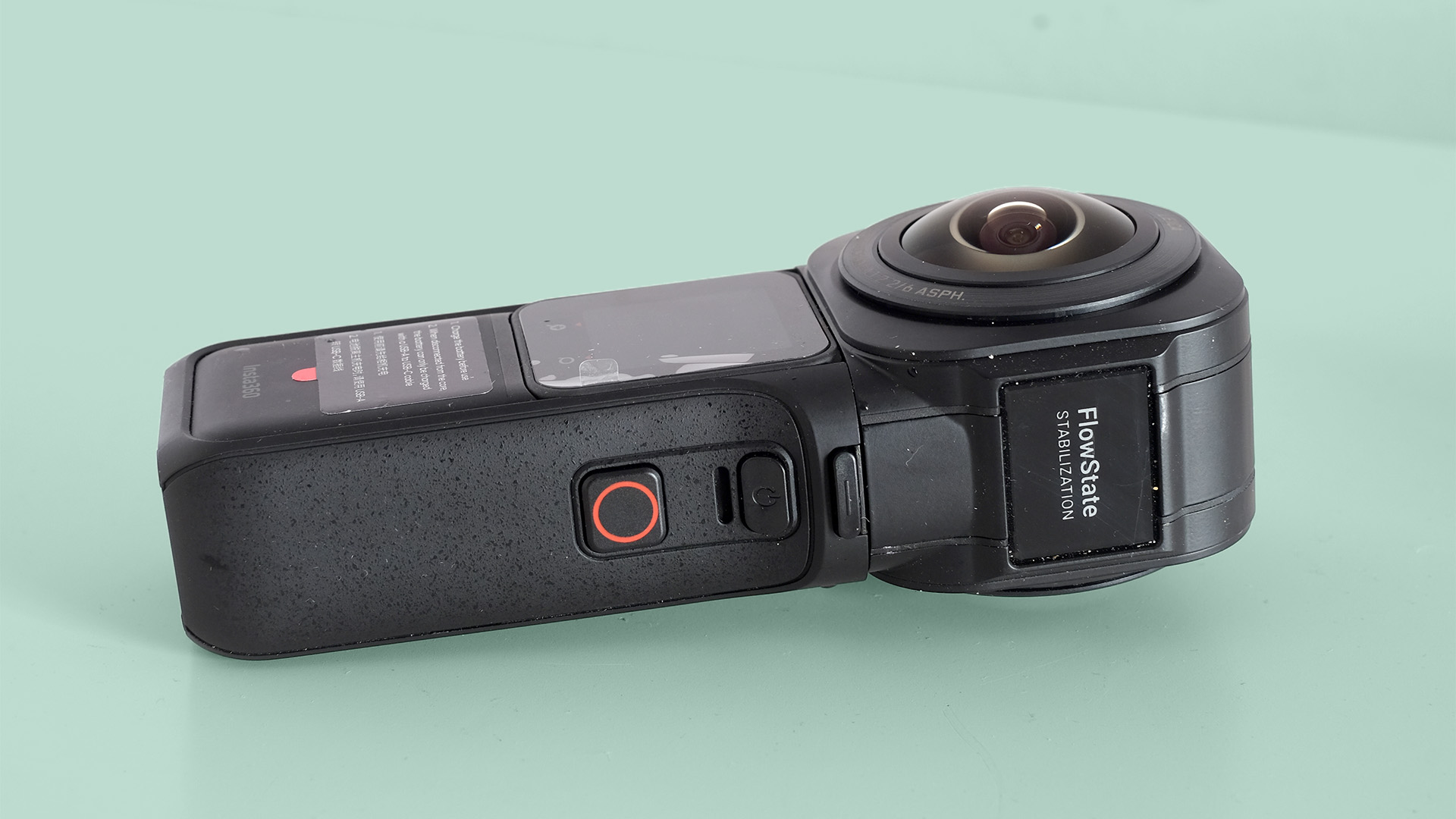
Like most action cameras, though, stills shooting feels very slow. We also compared the results from an HDR image at maximum and minimum HDR settings, and saw virtually no difference between the two. Still, the images are good and HDR does make a big difference over standard shooting.
Audio quality is largely the same as that of the Insta360 One RS, because the central module with mic is the same. It’s okay, but nothing special, which is why Insta360 offers a microphone module that plugs into the USB-C port on the side. This lets you plug in your own mic using a 3.5mm socket. It isn't included, but does only cost an extra $19 / £21 / AU$49.
We did have some issues with the Insta360 One RS 1-Inch 360 Edition during testing. It would not connect to any laptop we tried using the supplied USB-C to USB-A cable. Windows laptops said it was trying to draw too much power. MacBooks said it was “unreadable”.
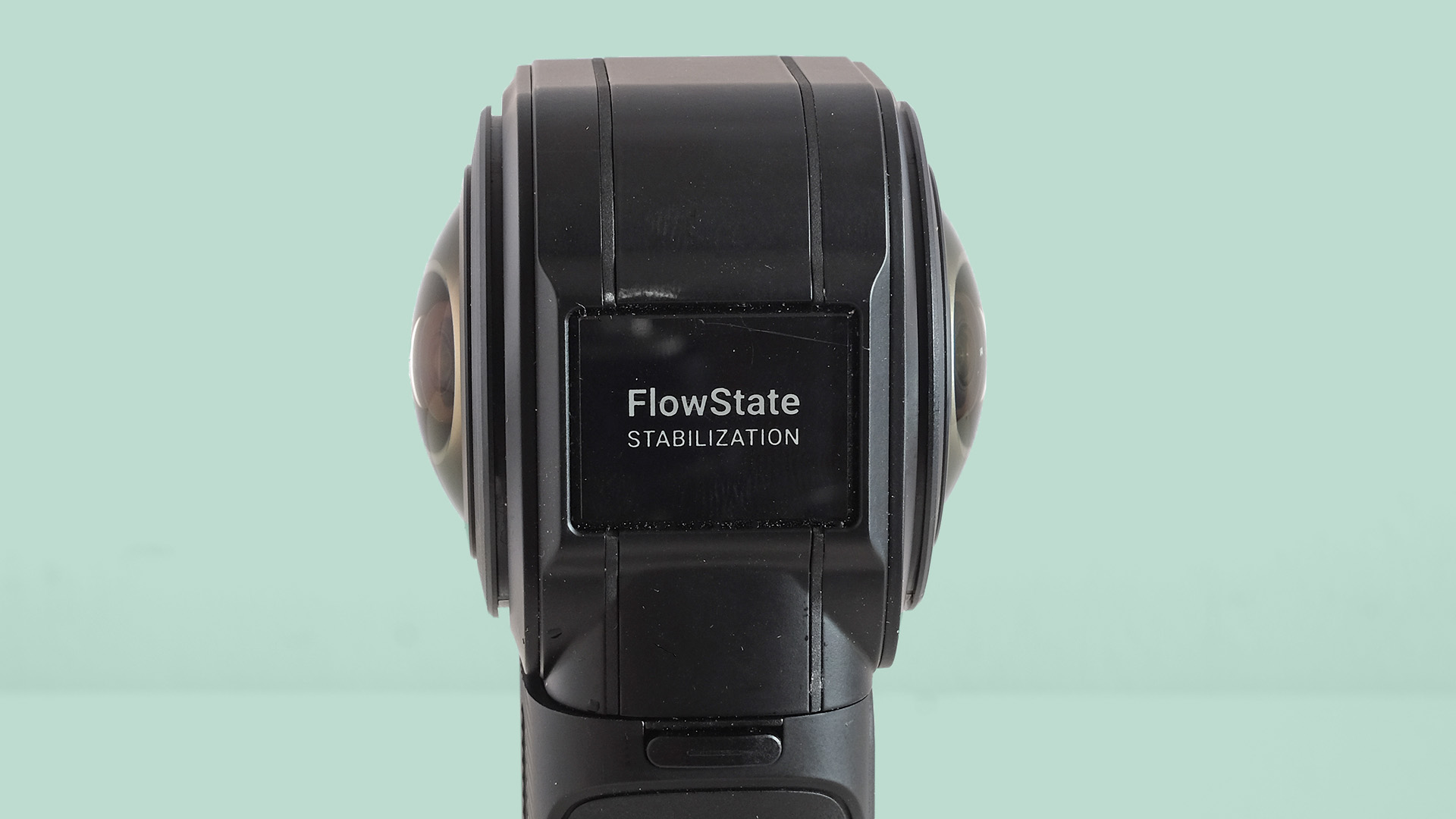
This was solved by using a USB-C to USB-C cable, which made the microSD storage turn up as a drive, as expected. We are not sure if this is a one-off, or a problem with the firmware. At one point our microSD memory card corrupted inside the camera, requiring a reformat. This may, or may not, be linked to the dodgy behavior when you try to plug the camera in.
Most Insta360 cameras have flaky elements at launch, but the actual experience of shooting with the Insta360 One RS 1-Inch 360 Edition was otherwise refreshingly stable overall.
Should I buy the Insta360 One RS 1-Inch 360 Edition?
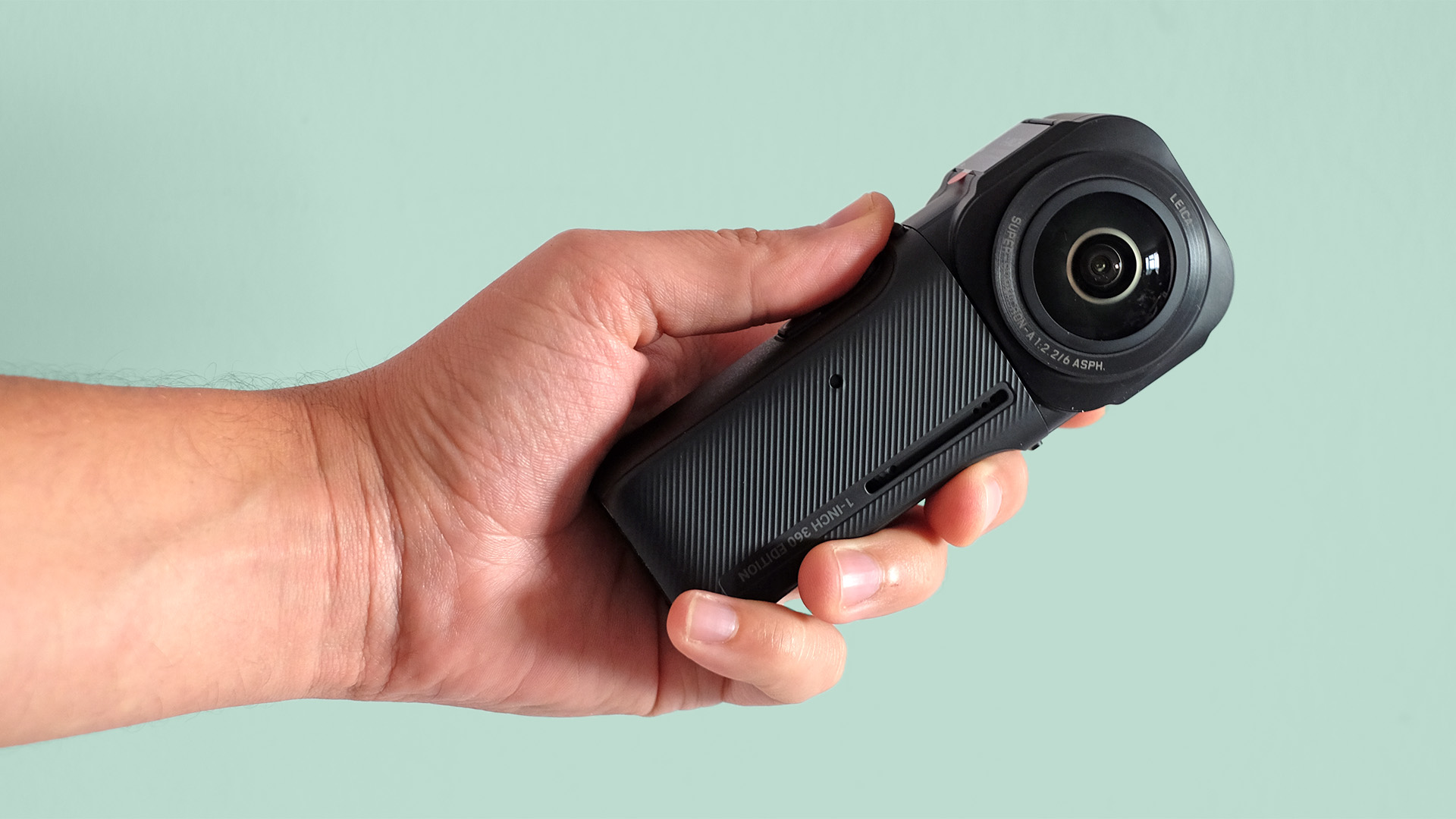
Buy it if...
You want the best possible image quality from a 360 camera
The Insta360 One RS 1-Inch 360 Edition has larger sensors than other consumer-grade 360-degree action cameras. This improves dynamic range, which helps retain more highlight information when you shoot during the day. It also leads to a cleaner-looking image when you shoot indoors in dim lighting.
You need an editing process that's fast and powerful
Insta360’s app-based editing tools are quick, dynamic and easy to use once you get over a brief learning curve. More than just classic 360-degree camera key frames, you can track objects or people and use the MultiView mode for picture-in-picture vlogging.
You'd rather avoid long selfie sticks
The camera's design effectively has its own grip. While the handle gets warm, the shape takes your hand far enough away from the lenses to avoid them ruining the footage. This may sound a small point to make, but means you can capture footage while on holiday without walking around with the thing on a long selfie stick, which – let’s be honest – is never a great look.
Don't buy it if...
You're mostly shooting at night or in low light
While the Insta360 One RS 1-Inch 360 Edition can take good low-light footage, the best results are found in a StarLapse mode that compiles long exposure frames – necessitating a tripod. We found standard 'walking around' night footage only a marginal upgrade over the GoPro Max, with the most obvious improvement in dim but not outright dark scenes.
You're looking for maximum toughness
The Insta360 One RS 1-Inch 360 Edition has poor water resistance for an action camera. IPX3 can’t handle more than light rain. Exposed curved lens glass without a removable cover feels vulnerable and we wouldn’t feel comfortable using this camera for some of the borderline abusive situations GoPros find themselves in. However, a big part of this is down to the higher price of the camera.
Your priority is simplicity and ease of use
While the Insta360 One RS 1-Inch 360 Edition is mostly great fun to use, it is less friendly than the rival GoPro Max in some respects. You can’t shoot 'ready to go' non-360 videos and the more advanced modes like TimeShift can’t be previewed on the camera screen. It means you have to spend more time in the phone/desktop app to produce actual results.

Andrew is a freelance journalist and has been writing and editing for some of the UK's top tech and lifestyle publications including TrustedReviews, Stuff, T3, TechRadar, Lifehacker and others.
